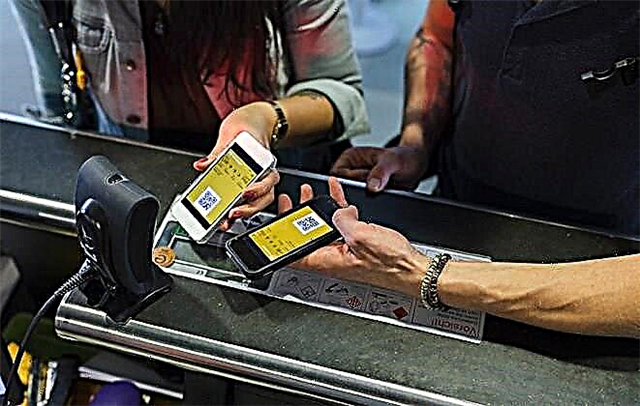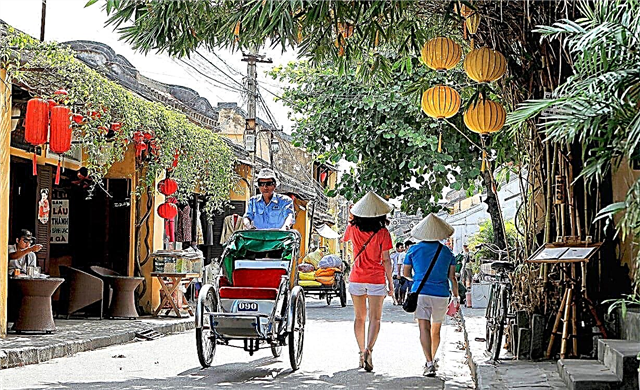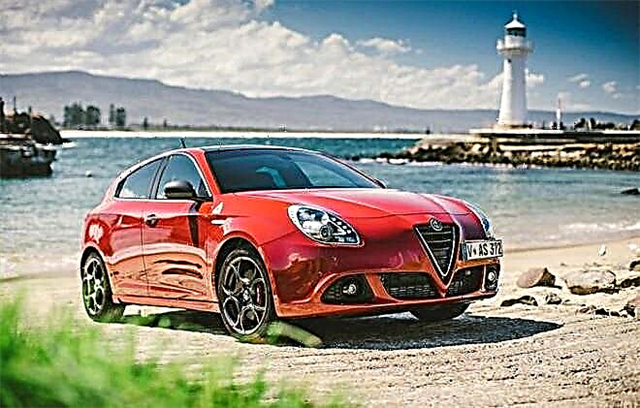The anticipation of a trip to the Apennine Peninsula is always exciting: magnificent nature, architecture, a huge number of historical monuments, excellent cuisine, the world's best clothing brands. Renting a car in Italy will allow you to feel truly mobile, provide a unique opportunity to see all the beauties of this amazing country with the greatest possible comfort, as well as visit the most remote corners in the shortest possible time.
Features of rental in Italian
If you look in detail, it quickly turns out that there are no special differences from the European car rental in Italy. The service is quite civilized, expensive, and there are enough Italian and international operators on the local market.
Pros of local distributors:
- the car can be cheaper;
- you can agree on a discount, reduction or refusal of the deposit;
- cash payment.
The downsides are the language problem, a small selection of inexpensive models to rent during the high tourist season.
It is much safer to rent a car in Italy from large international companies. Such a service will be predictable as it always includes a standard set of services. Some offices have Russian-speaking staff, and in case of conflicts, disputes are often resolved in favor of clients.
Cons of such a service:
- high price;
- large deposits, insurance deductibles.
It is 10-15 percent more profitable to take advantage of the offers of aggregator sites in advance. There will be support in Russian, free order cancellation.
A significant drawback - in this case, car rental in Italy without a deposit is impossible. It may be small, but irrevocable. Insurance (assicurazione) is compulsory. The choice of models and types of vehicles is the widest.
Rent terms
The following conditions apply in the Italian car rental:
- Mileage limit (mileage): more often than not there is no limit.
- Fuel: the client returns the car with the same balance as before the lease.
- Traveling to neighboring countries: in some companies you will have to pay extra for this opportunity.
- The size of the franchise: from 1-3 thousand euros (more for a luxury car).
- Deposit or security deposit: 500-800 euros.
- Mandatory presence of a credit card in the name of the main tenant (driver). It is difficult to get a car with a debit card. In addition, it is better to “freeze” the bank's funds than your own. In principle, any card will do, unless the word Debit is indicated on it.
For an additional fee, many companies offer one-way rentals.
You can take a car in Rome, and return it in Palermo, Milan or Pisa ─ wherever there is a desire and there is an opportunity under a contract. An additional fee may be charged for picking up / dropping off a car during non-working hours / days.
A car rental in Italy can be rented by a driver who meets the following requirements:
- age: at least 21 years old. By the way, in most companies, drivers under 25 are considered "young" and have to pay an additional fee of € 15 per day. The same condition applies to drivers over 70;
- minimum driving experience: at least a year (set individually for each rental). Driving a luxury car will require three years of experience.
Required documents
An international driver's license in Italy for renting is needed only for those Russians who have an old-style national driver's license (VU) (issued before April 1, 2021).
It is worth considering that even if you rent a car without any questions, in the event of an insured event, an international document may often be required (insurers and local police officers do not read the provisions of the Vienna Convention).
If the VU does not have a mark on the length of service, in this case, car rental in Italy under Russian license is possible only in conjunction with an IDL. Problems are possible, but not the fact that there will be, but from practice we can say that they practically do not exist.
Our recommendation is that an international driving license must be valid for at least 12 months. In addition to the rights, you will need:
- Passport (foreign).
- Electronic voucher (when booking through the website).
- Bank card or cash.
- Insurance policy.
And one more nuance: those who receive a residence permit, after six months of driving, will have to get an Italian VU.
Rental car insurance
As in all of Europe, by definition, third-party insurance TLP (Third Leability Protection) or TPL (Third Party Liability) is immediately included in the Italian rental. This is an analogue of the Russian OSAGO, without which the car, in principle, cannot be issued.
The client can choose from several types of additional insurance, differing in cost and degree of financial responsibility:
- Basic with a franchise ─ CDW (Collision Damage Waiver) or LDW (Loss Damage Waiver), This is damage insurance. In fact, CASCO without the risk of theft. The LDW – CDW + TW option includes theft insurance. In the contract, the deductible required in these cases (the minimum amount not covered by the insurance) is marked as EXCESS.
- Complete without a franchise ─ SCDW (Super Collision Damage Waiver). This is a complete CASCO. If you choose to rent a car without a deductible, the insurer is fully responsible for the consequences of an accident. When choosing SLDW (super CASCO), he is also responsible for car theft.
- TP (Theft Protection) or TI (Theft Insurance) ─ insurance against theft.
- PAI (Personal Accident Insurance) ─ accident insurance.
Rental price in Italy
In different regions of the country, the service is estimated approximately the same. There are several discounters operating in the country offering prices 10-15% below market prices. It is also cheaper to rent through special services, such as rentalcars.com. As a rule, these are small Italian firms.
Major players in the rental market rarely lower the price level, but the quality of services always remains invariably high.
How much it costs to rent a car in Italy depends more on the terms of the contract, the insurance package, the requirements of the renter and local tax laws. The more options you need, the more expensive the rental will be.
The rental price depends on the class of the car and starts from € 10 per day. For example, a golf-class car with automatic transmission will cost an average of € 35-45 per day. It costs a little more in Sicily than on the mainland.
Elite cars cost from € 100 per day. For a week of using "Ferrari" will have to pay almost € 10 thousand. The inclusion of the option "second driver" will increase the rental amount by € 20 per day.
Aggregators and rental companies
It is most convenient to book a car in Italy in advance remotely. There are two options for this:
- Through the website of the aggregator.
- On the portal of a large company.
The algorithm for working with such online services is approximately the same. Below is a list of the most popular aggregators that accumulate the capabilities of several rental services on one site:
- Rentalcars,
- Auto Europe,
- Car Rental With Economy.
The choice is made by comparing conditions and rates. All the services presented above have Russian-language versions, so there should be no problems on the sites.
As for the cost of services, the final figure may be comparable or even lower than that offered on the portals of the companies themselves - due to partner discounts. But cheap doesn't mean good.
You can rent a car in Italy from the following international companies:
- Hertz,
- Sixt,
- Avis,
- Europcar.
If you are not afraid of English and Italian, you can use the services of local rentals:
- Maggiore,
- Locautorent,
- Autoeuropa,
- Goldcar.
The latter is Spanish, but is considered "native" in the Italian market. The company has offices in several airports and offers very competitive prices. And the optimal combination of cost and quality of services is provided by Maggiore.
Associated expenses: fuel, toll roads, parking
Fuel costs in Italy are among the highest in Europe.At the end of March 2021, the price per liter is as follows:
- gasoline: 95th - € 1.52, 98th - € 1.65;
- diesel: € 1.47;
- gas (LPG): € 0.66.
Refueling in cities is cheaper than on highways. If possible, it is better to buy fuel in neighboring Austria, where the cost is significantly lower (a liter of 95th gasoline costs 1.2 euros).
At self-service gas stations, a liter of fuel costs about 10 euro cents less. There are 24-hour petrol stations only on the autobahns.
There are several toll roads in the country, which usually have a free alternative. The fare is determined by the class of the vehicle, the type of highway section (plain / mountain), the management company.
In 2021, motorway prices increased by an average of 1% compared to 2021. The average fare is € 7 per 100 km.
To calculate the cost and build a route, you can use the official website of the road network autostrade.it (English is supported).
There are several toll tunnels in the northern part of the country. One of the most popular is Mont Blanc. A one-way trip by car costs about € 46-47. Round-trip travel on the panoramic Timmelsjoch High Alpine Road, open from July to October, will cost € 21. Payment is made at the entrance - by card or cash.
There are few free parking lots in the centers of large cities; they are available only on the outskirts or in very small towns. Parking zones are divided into three types and are marked with different colors:
- Blue - paid. Indicated by blue markings. The payment method is indicated on the sign. A parking disc (Disco Orario) can be purchased at a tobacco shop (Tabbachi), at a gas station or at a bank.
- White is free.
- Yellow - parking for disabled people and delivery vehicles.
The cost of parking is set by the municipalities. For example, in Verona it costs € 1-2 per hour (in the center up to € 4), in Florence ─ € 30 per day, in Turin - from € 0.5 on the outskirts to € 2 in the center, and in Bergamo ─ € 1.5-2 per hour.
Underground parking is usually more expensive, payment is made there on the actual time, which is more convenient.
Entry into the historic center of most cities is prohibited.
If the entrance to your hotel is marked with the Zona Traffico Limitato sign, you should ask at the reception to add the car number to the list of allowed cars.
The nuances of the road
Permitted speed for cars / motorcycles:
- in settlements - 50 km / h;
- outside settlements - 90 km / h;
- on highways ─ 110 km / h;
- on highways ─ 130 km / h.
In conditions of rain, fog, snow on roads and highways, the speed should be reduced by 20 km / h. The dipped beam must be switched on outside of settlements, at the entrance to the tunnels, in poor visibility conditions. If there is no separate sign, in a circular motion, cars that move along the ring have an advantage.
Children under 3 years old (or older, but below 150 cm) are prohibited from transporting without a special restraint device. All passengers are required to wear seat belts.
The rules allow the presence of up to 0.05 ppm of alcohol in the driver's blood (a glass of wine or beer) if his age exceeds 21 years, and the driving experience is three years.
The use of radar detectors, as well as talking on a mobile phone while driving without hands free is prohibited. In the period from October 15 to April 15 in the north of the country, as well as in the regions of Valle d'Aosta and Bolzano, the use of winter tires is compulsory.
Penalties for breaking the rules
Even the best car rental in Italy will not protect the driver from high fines:
- Travel on a prohibitory sign / signal - € 162-646.
- Overtaking violation - € 162-646.
- Talking on a mobile while driving - € 160-646.
- Non-use of a child seat - € 80-323.
- Unfastened seat belt € 80-323.
- Driving under the hood - € 572-6000.
- Using a radar detector - from € 800.
- Speeding fines:
- up to 10 km / h ─ from € 41 to 168;
- from 10 to 40 km / h - € 168–674;
- from 40 km to 60 km / h - € 527–2108;
- over 60 km / h - € 821–3287.
At night (from 22.00 to 7.00) the size of fines for serious violations increases by 30%. For violations of parking rules, evacuation is applied. Fines can be levied locally ─ a quarter of the maximum.
Conclusion
When choosing a service, you should pay attention to the terms of the franchise. Renting a car without a deposit is more expensive, but it looks more attractive for tourists, since most companies return deposits only 10-15 days after the termination of the lease. In addition, the main problems of autotourists in Italy are associated with the unscrupulousness of rental companies, which often withdraw funds from customers' cards for an incomplete fuel tank, an allegedly dirty interior, and so on.
Whatever you choose for your trip - convertible, motorhome, economy car or motorcycle - heed our advice:
- Be sure to inspect and record all the shortcomings during acceptance and delivery.
- Sign the contract only after studying the conditions.
- Be interested in reviews and experiences from other users.
- Observe traffic rules and do not leave documents and valuables unattended for a long time.
Renting a car with full insurance frees you from any headache when operating a car, communicating with distributors, police officers and insurers.











